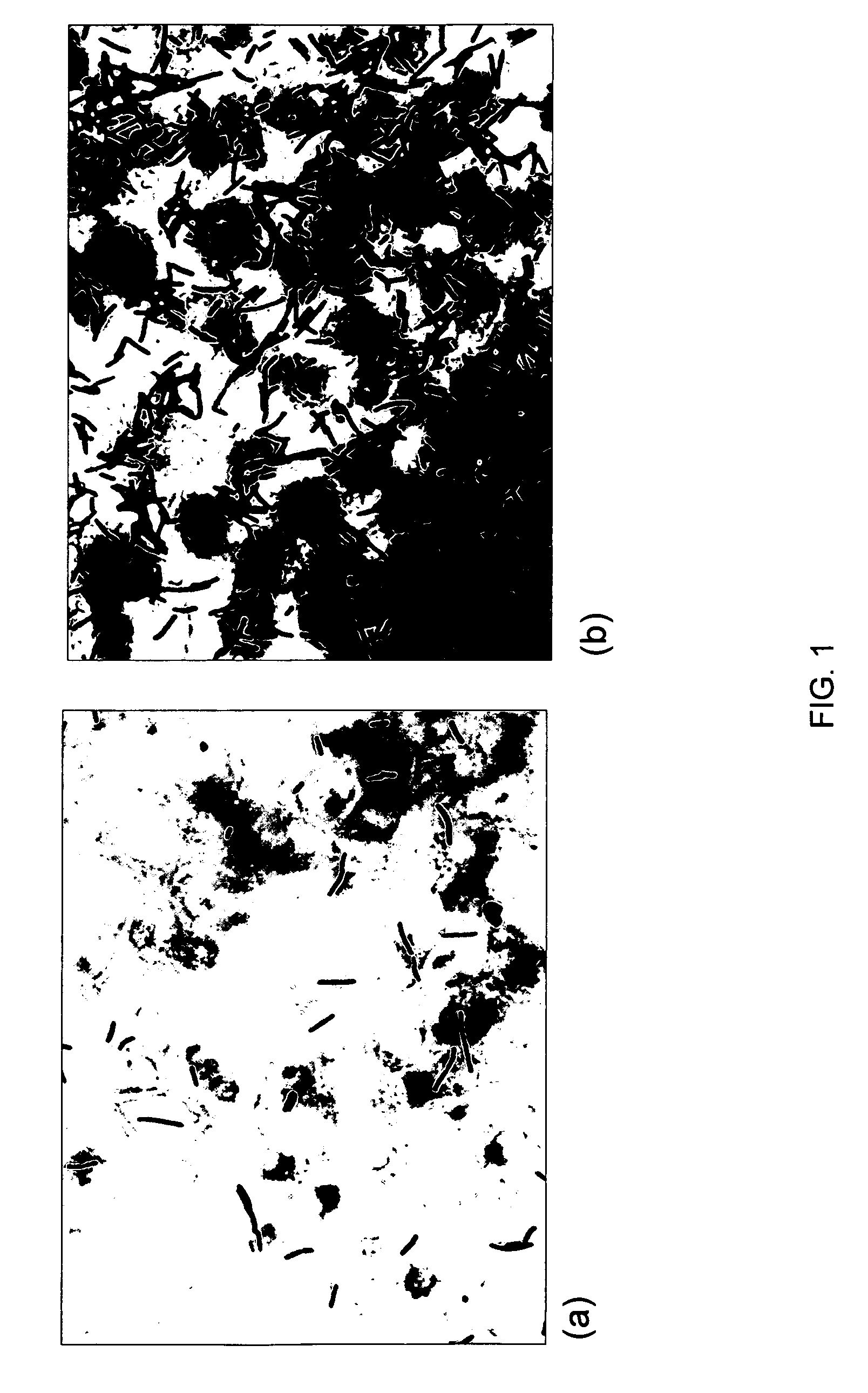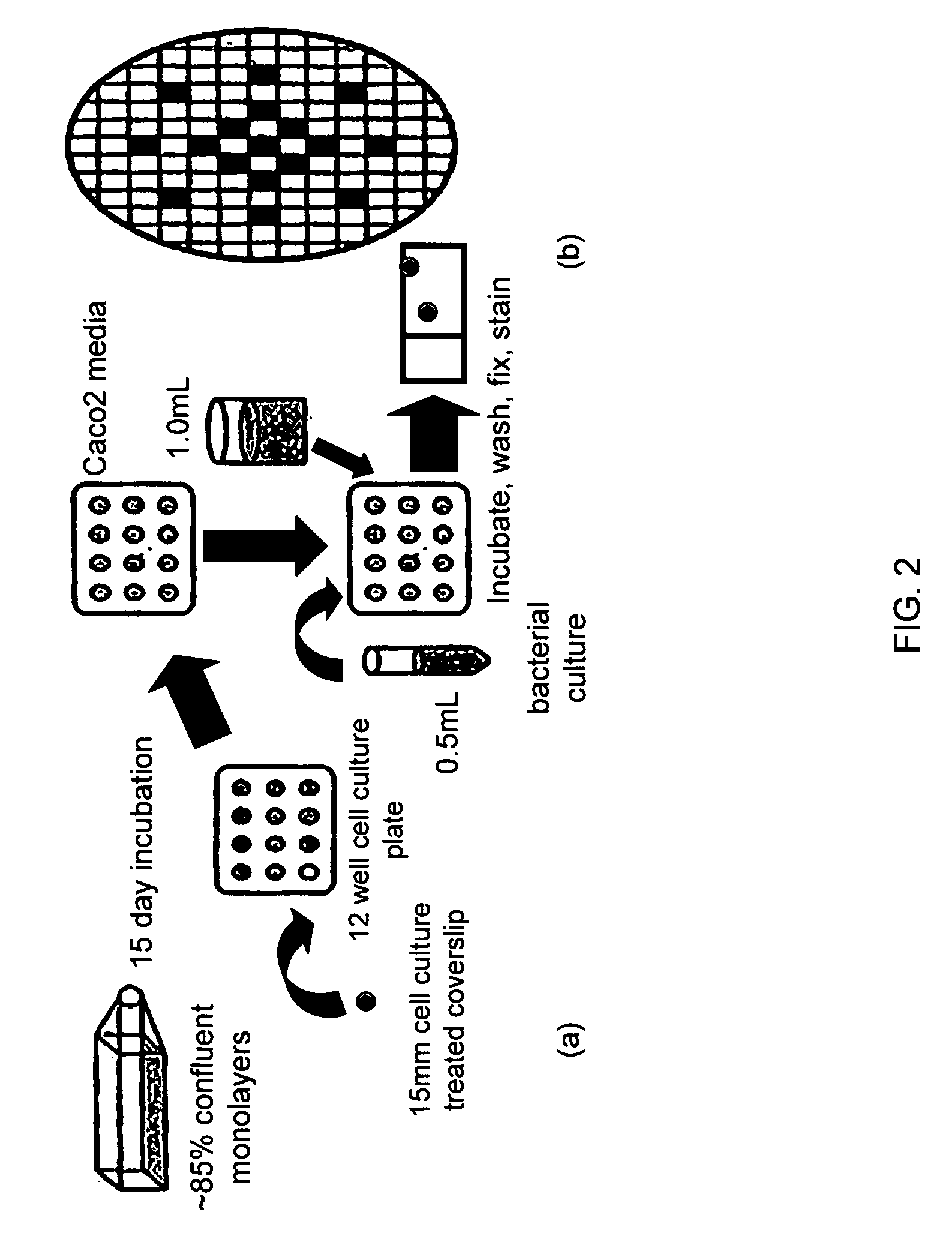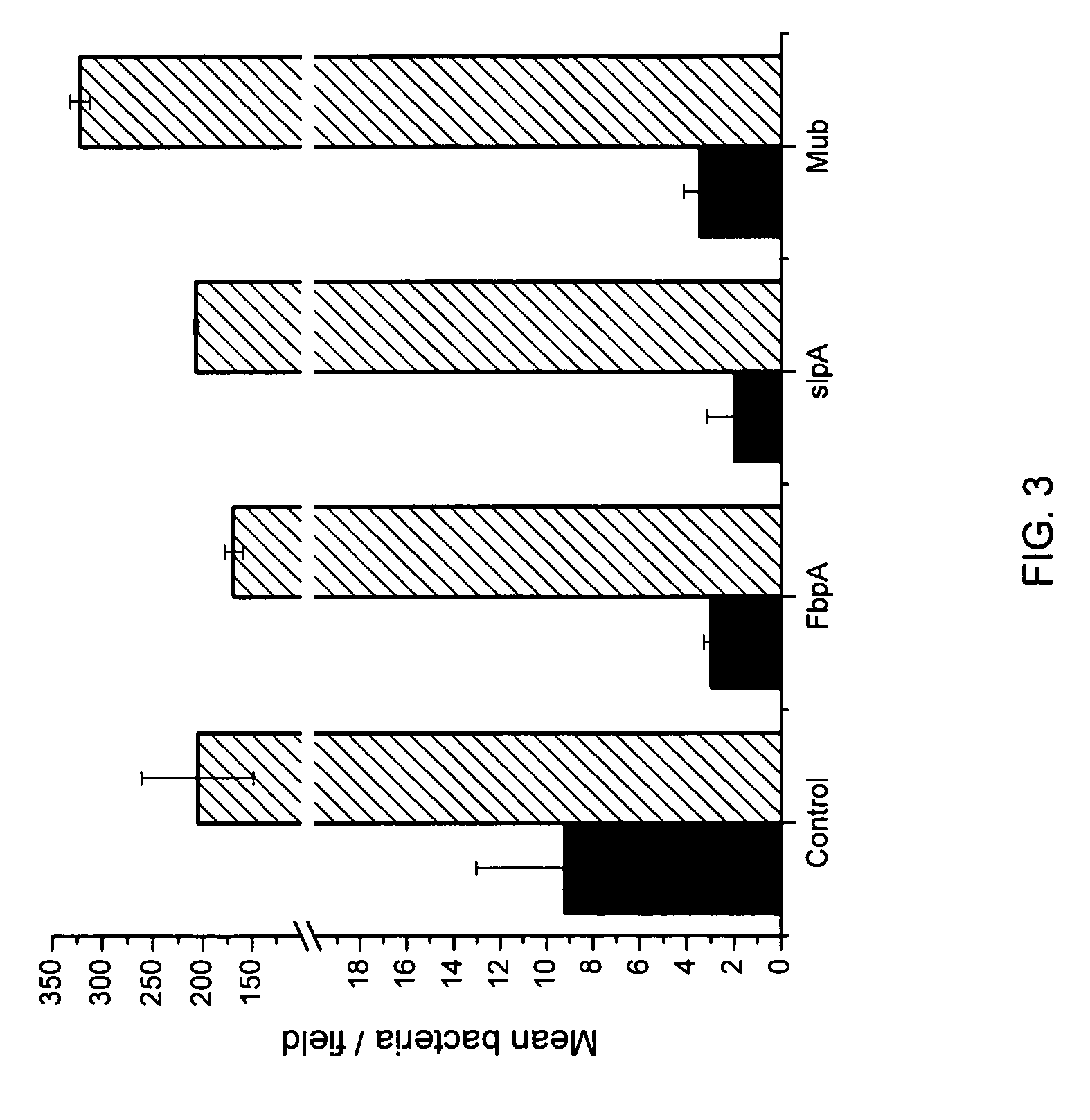Methods and compositions to modulate adhesion and stress tolerance in bacteria
a technology of stress tolerance and bacteria, applied in the field of bacteria, can solve the problems of complex process and little known, and achieve the effects of improving the and improving the adhesion and/or stress tolerance of bacteria
- Summary
- Abstract
- Description
- Claims
- Application Information
AI Technical Summary
Benefits of technology
Problems solved by technology
Method used
Image
Examples
example 1
Gapped BlastP Analysis of Amino Acid Sequences
[0165] Sequences of the invention were aligned using the Gapped BlastP alignment method and parameters disclosed herein. Table 1 summarizes the top Blast results for these sequences.
[0166] A Gapped BlastP amino acid sequence alignment showed that SEQ ID NO:14 (372 amino acids, ORF LBA1080) has about 55% identity from amino acids 11-371 with a protein from Leuconostoc mesenteroides subsp. mesenteroides that is a methionine synthase II (cobalamin-independent) protein (Accession No. ZP—00064070.1), about 47% identity from amino acids 5-372 with a protein from Lactobacillus gasseri that is a methionine synthase II (cobalamin-independent) protein (Accession No. ZP—00046311.1), about 46% identity from amino acids 7-372 with a hypothetical protein from Chlamydophila pneumoniae (Accession No. NP—224351.1), 44% identity from amino acids 4-372 with a hypothetical protein from Lactobacillus johnsonii (Accession No. NP—965623.1), and 45% identity...
example 2
[0191] Microarray analysis of gene expression affected by LuxS and AI-2 has been performed on a number of different microbial species in order to determine the function of LuxS on cellular processes. The influence of AI-2 on E. coli K-12 grown in the presence and absence of glucose revealed altered gene expression of genes related to the lsr operon, methionine metabolism, and carbon utilization (12, 32). Another study linked LuxS production with genes involved in cellular growth and division using E. coli microarrays (9). Transcriptional microarray analysis of a LuxS− mutant of Porphyromonas gingivalis and its wild type implicated the participation of LuxS with the stress response of that organism (36). In addition to pathogenic bacterial strains, several non-pathogenic strains have demonstrated a phenotype associated with AI-2 production. For example, the ecological performance of Lactobacillus reuteri in the murine gastrointestinal tract was altered in a LuxS− mutant (28). This st...
PUM
| Property | Measurement | Unit |
|---|---|---|
| temperature | aaaaa | aaaaa |
| temperature | aaaaa | aaaaa |
| pH | aaaaa | aaaaa |
Abstract
Description
Claims
Application Information
 Login to View More
Login to View More - R&D
- Intellectual Property
- Life Sciences
- Materials
- Tech Scout
- Unparalleled Data Quality
- Higher Quality Content
- 60% Fewer Hallucinations
Browse by: Latest US Patents, China's latest patents, Technical Efficacy Thesaurus, Application Domain, Technology Topic, Popular Technical Reports.
© 2025 PatSnap. All rights reserved.Legal|Privacy policy|Modern Slavery Act Transparency Statement|Sitemap|About US| Contact US: help@patsnap.com



